
An Exceptional Investigation on a Boutet pistol by Michael

This pistol, made by Napoleon’s personal gunmaker, Nicolas Noël Boutet, was purchased at the end of 2018 and is probably the rarest and most valuable single pistol in my collection. Much has been written about it over the last few decades or longer – most of it incorrect.
|
|
Boutet scholars, US
auction houses and other experts have stated numerous times that this
pistol was possibly one of a pair made for Napoleon’s sister Eliza
Bonaparte in 1810.
Surprisingly, only a
brief amount of research revealed that this can’t possibly be true. The
Eliza Bonaparte matching pair are comfortably ensconced in a mahogany
box on display in the Royal Ontario Museum in Canada. So, knowing that my pistol wasn’t one of the pair made for Eliza Bonaparte, I set out to find who it was actually made for. |
Clearly it is a very important pistol; the engraving and gold inlay is equal to
- or better than - anything else turned out by la Manufacture de Versailles.
We’ll start with the engraving on the lock plates:
-
One
international respected Boutet expert suggests the engraving may be the work of
Renneson (though little is known about him, he apparently specialised in
pastoral scenes).
What
I do know is that the bull on one of the lock plates was taken from a painting
by Italian master, Stefano della Bella (1610-1684).
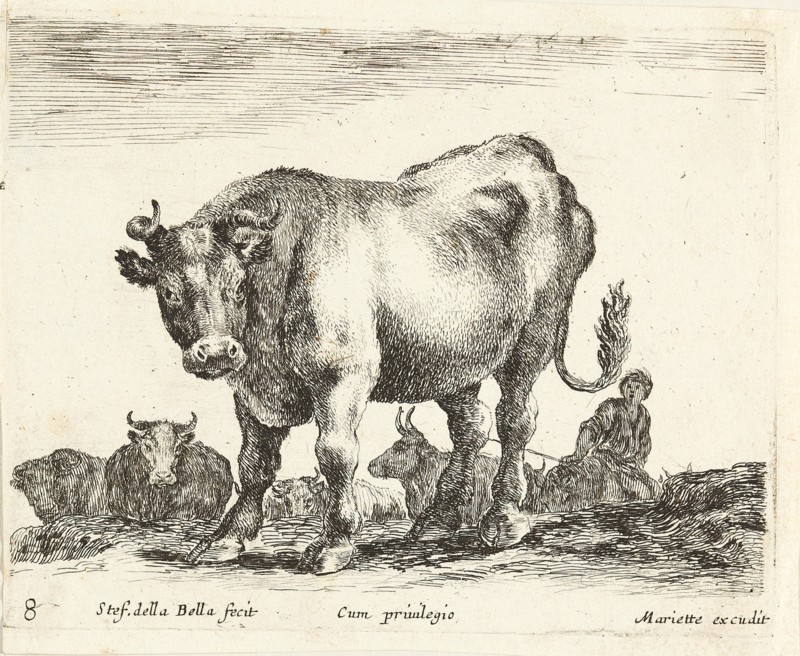
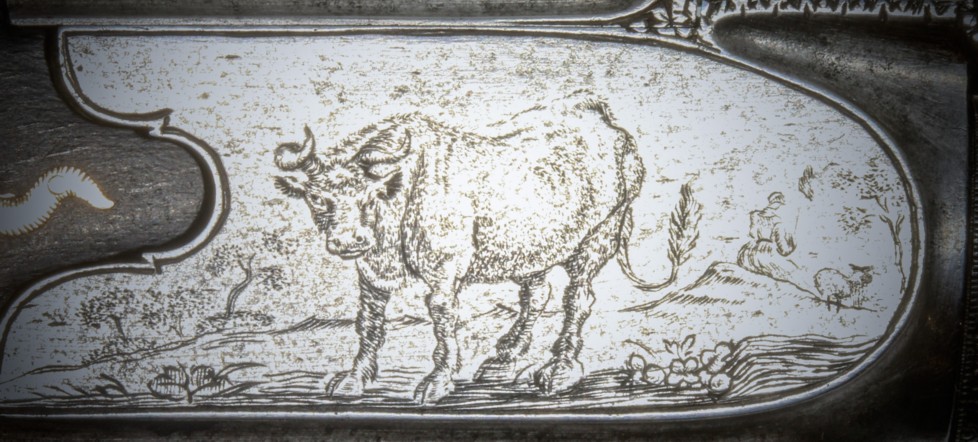
The
engraving on the other lock plate was from a painting by Dutch master, Paulus
Potter (1625 – 1654). It also appears on a pair of pistols by Jean LePage
displayed in the Metropolitan Museum of Art.
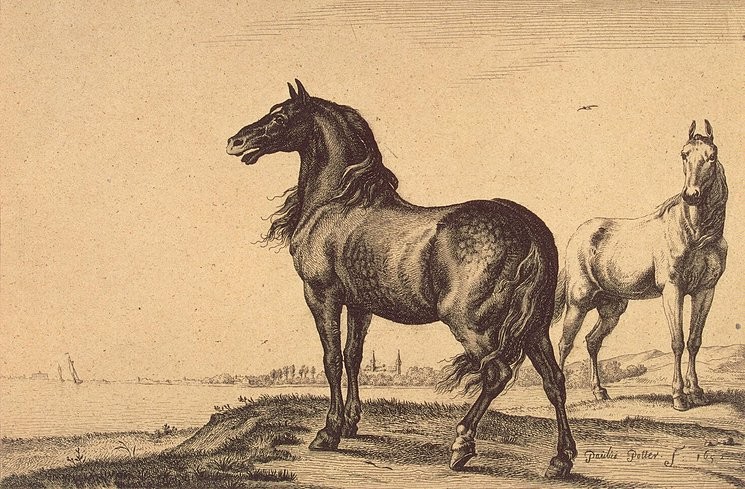
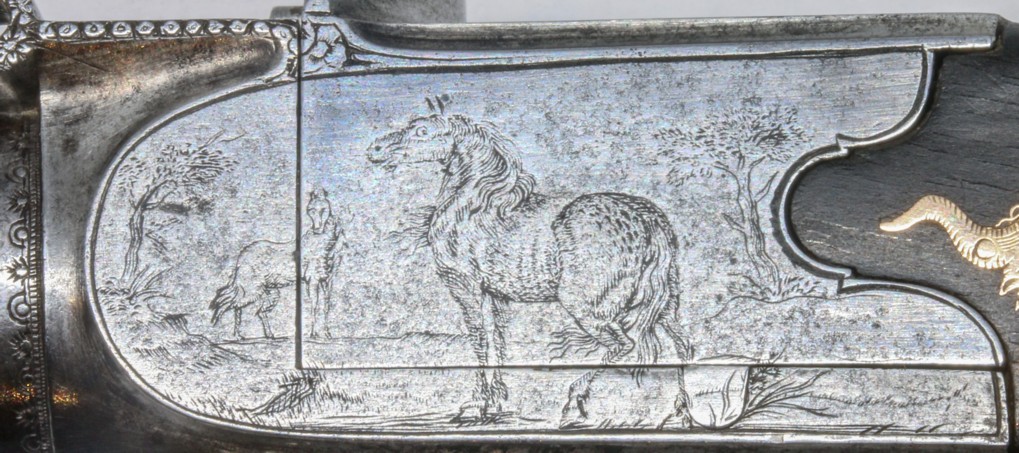
Clearly this is a very special pistol, but before we go too much further, I want
to try and place this pistol with regard to its quality and therefore its
importance and likely recipient. The gold inlay is the give-away to the prestige
of the piece.
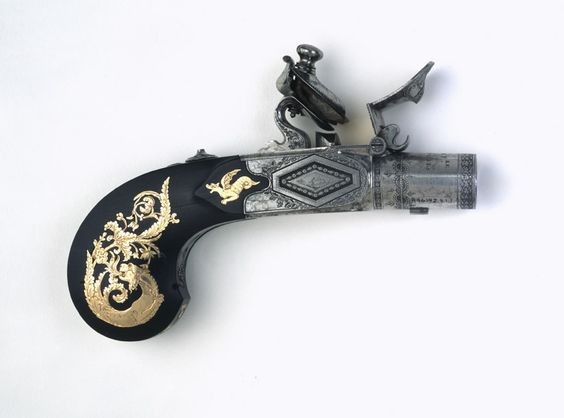
The
above pistol is one of the previously mentioned pair of Eliza Bonaparte pistols
in The Royal Ontario Museum.

This
is one of a pair formerly in the collection of the Prince Anatole Demidoff of
San Donaton and now in the Wallace Collection in London.
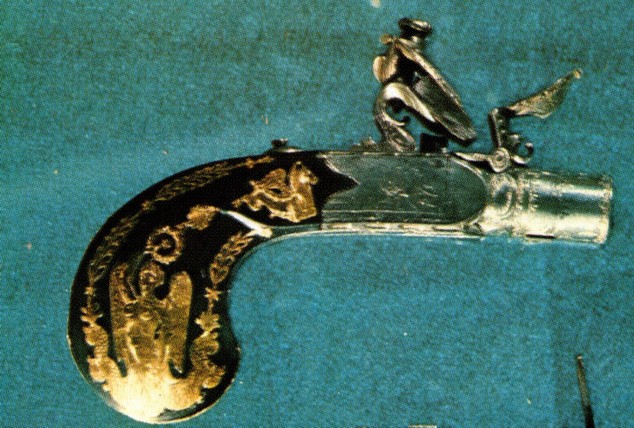
This
is one of a pair made for Admiral Bouvet de Precourt.

The
above pistol is part of a garniture presented to the Marquis de Santa Cruz,
possibly intended for the King of Spain, Charles IV. The garniture sold for USD
5,000,000.

The
above pistol is in the Polish Army Museum.
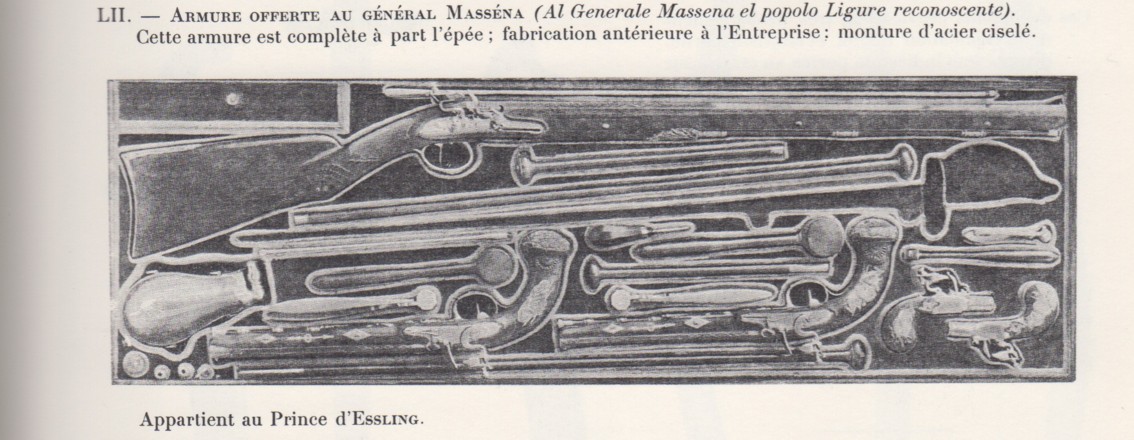
The
above garniture was presented to André Masséna, 1st Duke of Rivoli, 1st Prince
of Essling & Marshal of the Empire. This garniture was photographed for a book
by Capitaine Maurice Bottet in 1903. It was also mentioned by Boutet expert Dean
Taylor in the August 1985 issue of Arms Collecting. My pistol was also featured
in this issue along with a photograph.
Dean
Taylor described this garniture as “Probably the most elaborate casing of Boutet
arms – the present whereabouts of this set is unknown”.
I
contacted Victor-André Masséna, Prince of Essling and president of Fondation
Napoleon. He advised me that the garniture, minus the sabre and the two large
pistols, were still in his collection.
Elodie Lefort, Responsable des collections, Fondation Napoleon was kind enough
to photograph what was left of this garniture, it appears below.
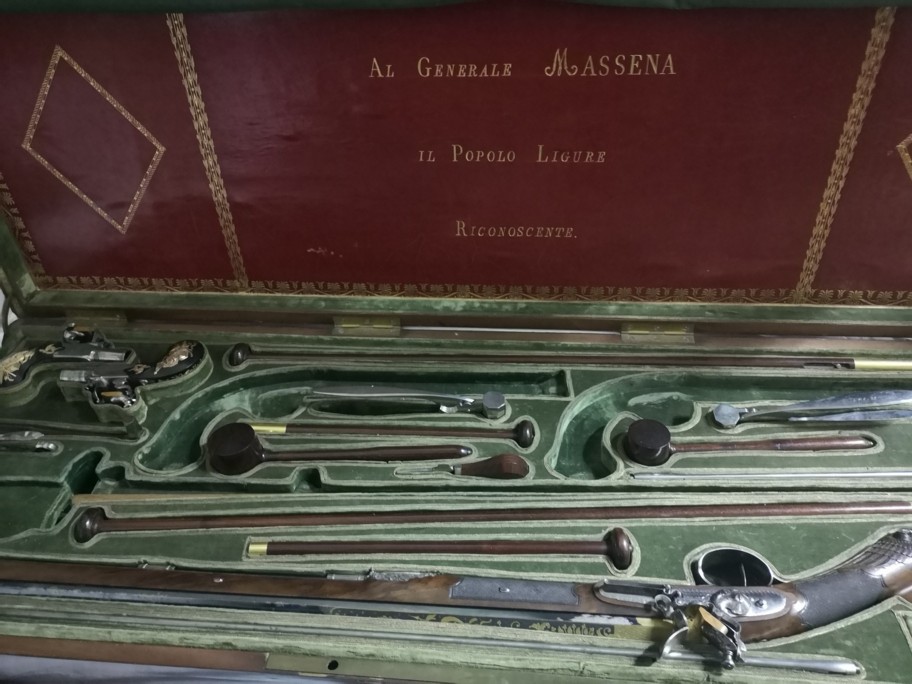
Most
of Boutet’s gold-mounted pocket pistols featured dragons and griffons, but they
all differed slightly from pistol to pistol. As you can see (below) , the dragon
on the Masséna pistols is identical to the dragon on mine (Masséna pistol on
left mine on right).



And
this is my pistol; at least the equal of any of the others in all respects,
particularly the gold inlay work.
As
lovely as it is today, it hasn’t looked like this for a very long time; decades
at least, maybe much longer.
The
pistol was in a very poor state of repair and condition, despite being in two
very important US collections; the Frank M. Sellers collection and the H.H.
Thomas collection.
The
top-jaw had two chips in the side (see bottom left of photo).
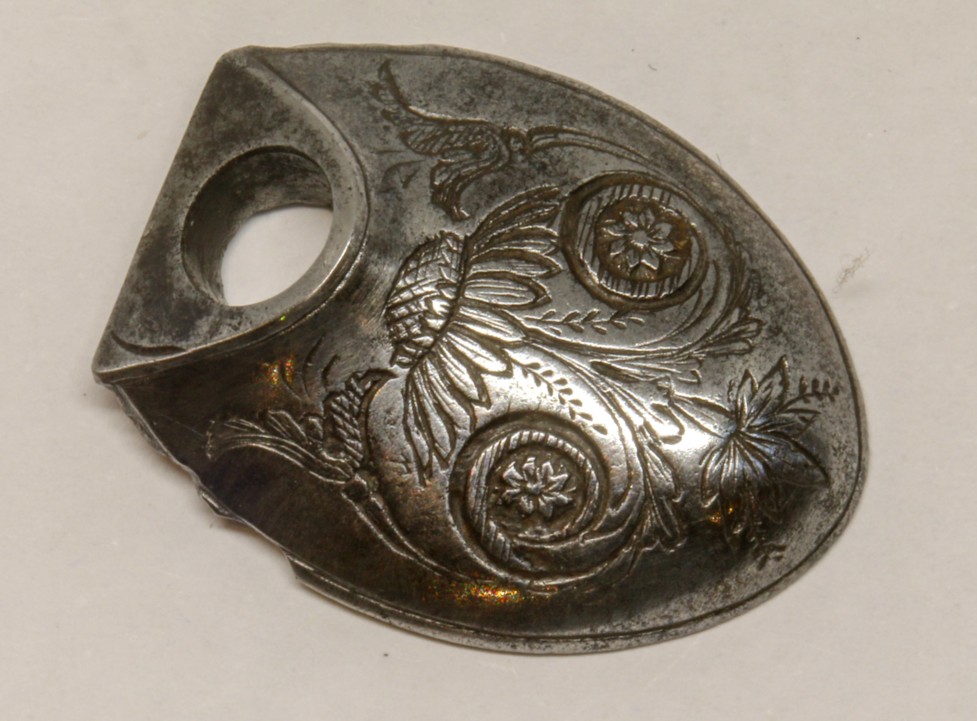
The
frizzen had a chunk out of the top and at the bottom where the safety engaged.
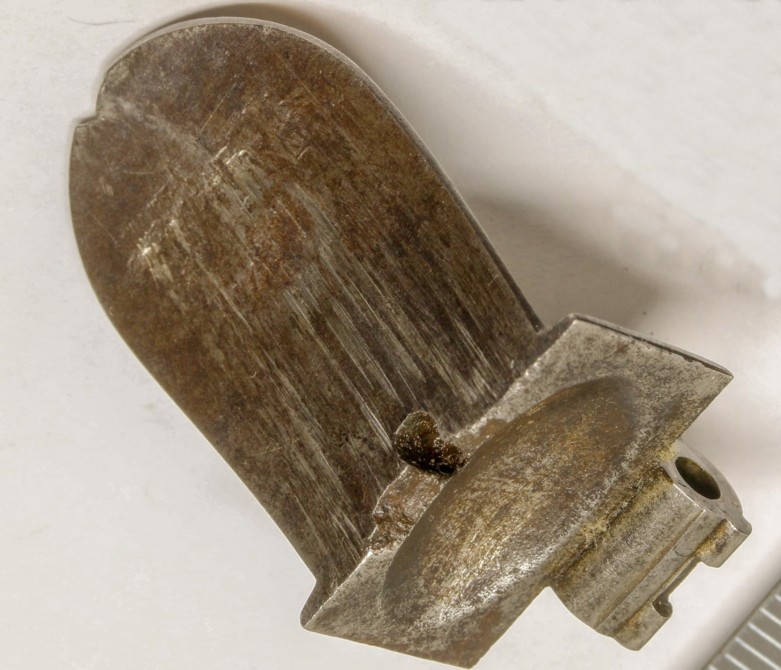
This
damage was repaired using a laser. The best match for the filler rod turned out
to be the wire from the centre of garbage bag twist ties. The laser was so
efficient there wasn’t even the slightest heat colouring, even close to the
welds.
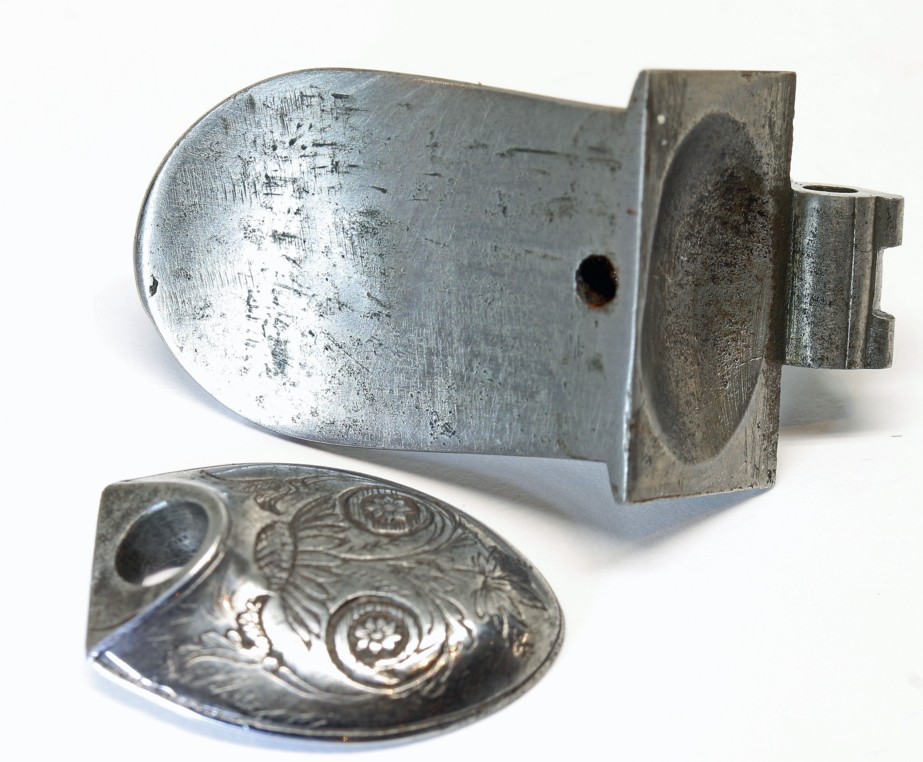
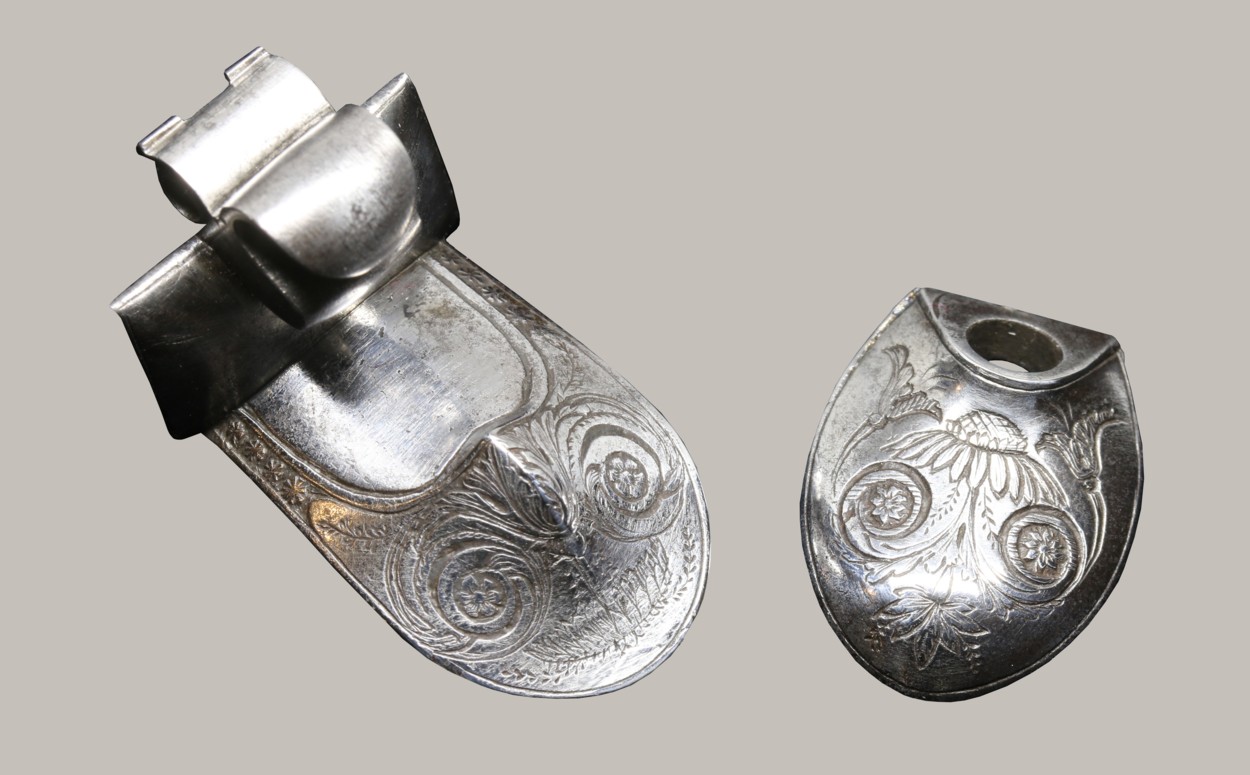
Now let’s move on to the folding trigger.
|
|
The engraving on the
folding trigger was not in the same league as on the rest of the pistol.
I am truly surprised
that three major US auction house specialists, one antique dealer and
one very knowledgeable author, all failed to notice or mention that the
trigger is a poor replacement. I don’t know when the trigger was replaced but I suspect it was a long time ago, more on this later. |
When
I finally got my hands on the pistol, an initial rudimentary examination
revealed a pair of skinny, discombobulated legs dangling below the trigger and
into the cartouche. How the previous collectors, experts and historians missed
this is a mystery to me.
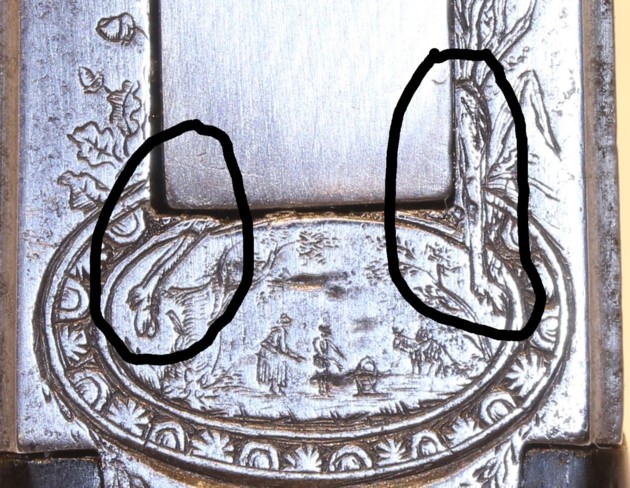
You
will notice the very unusual angle of these legs and also the knee on the right
leg. The angle at which it enters the trigger suggests that the leg is bent and
that the upper part of the leg goes down rather than up or across.
I
searched literally thousands of images, etchings, drawings, paintings etc.,
bought books on Old Masters known for specialising in animals, I even
commissioned two artists in an attempt to get a body shape to work with these
legs in any configuration – all to no avail.
Eventually I wrote to several museums and that is when I hit the jackpot. The
Royal Ontario Museum were incredibly helpful; they pulled the two Eliza
Bonaparte pistols from their display and photographed the underside for me –
bingo!
It
immediately became clear that my pistol was part of the same series as the Eliza
pistols; there is a near identical cartouche on my pistol and one of the Eliza
pistols. (my cartouche also has a donkey).

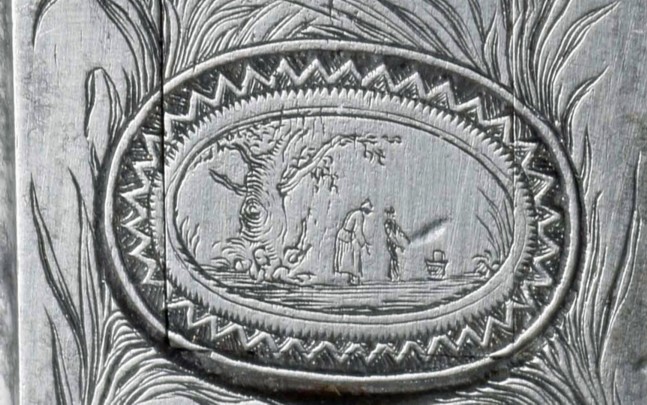
Now,
finally, I could see how the animal on my trigger was meant to be posed. One of
the Eliza pistols has a goat hanging over the cartouche with legs dangling in an
almost identical manner to mine.

I
knew mine wasn’t a goat, but the deer on the replacement trigger gave me a clue.
I suspect the (not very good) engraver of the replacement trigger was told the
original had a deer on it and he did his best – pity he didn’t factor in the
discombobulated legs.
|
|
I contacted a very
talented animal artist in Poland, Monika Zagrobelna and commissioned her
to draw me a sketch for my engraver. This is what she drew. (She got her
inspiration from the minute part of the antler on the pistol body
proper). |
Having made a new trigger2, the next job was to send the pistol to my
engraver, Ray Hood.
Ray
Hood FIPG is a world-renowned Master Hand Engraver. Originally from London, Ray
now resides in Adelaide, Australia and runs his own successful business, London
Engraver.
Ray
is the only hand engraver in Australia to have completed an intense 6-year
apprenticeship at Garrard & Co, the former Queen’s Crown Jewellers in London. He
is a member of the venerated Goldsmith’s of London and was made a Freeman of the
City of London for his services to the trade. Ray is also a Fellow of The
Institute of Professional Goldsmiths. Hand engraving at this level is highly
exclusive and very rarely found.
The
most important thing, above all else, was that the engraving on the pistol
proper could not be modified or refreshed in any way – Ray had to work with our
oddly-angled, dangling legs.
Ray’s
work is gob-smackingly, breathtakingly beautiful. I never cease to wonder at the
work he does for me. Remember, this trigger is only 10mm wide – look at the
detail!

Given
the near-identical cartouches, Griffins and dangly legs, we can now suggest,
with a very high degree of certainty, that these pistols were made as part of
the same series and for an equally important person.

The
damage to my pistol suggests that the pistol was dry-fired with the safety
engaged. This would have caused the damage to the top of the frizzen, the safety
engagement hole and the trigger itself. This is not likely to have occurred in
the hands of a curator or collector, more likely a child playing with it, or
someone else with no understanding of the mechanism of the firearm or its
significance.
This
pistol is too similar to the Eliza pistols and way too expensive to have been
commissioned for anyone other than someone very important to Napoleon.
We
may never know for sure who this pistol was made for or if it was part of a set
or garniture, but we do know Boutet made very few gold-mounted pocket pistols
and all of them were made for people close to or politically important to
Napoleon.
1pistols
described in Boutet’s annuuier – “Pist. De Poche, Grav, Riche, Ebene, placage
or” in a mahogany box, made in 1810 for Eliza Bonaparte
2I
am keeping the old trigger with the pistol as it is part of its history
A
note on Boutet and LePage engravings
Animals feature prominently on flintlock pocket pistols made by Nicolas Noel
Boutet, Jean LePage and their contemporaries.
There
is strong evidence that Boutet & LePage’s engravers took their inspiration from
etchings by Ignace Joseph Chevalier de Claussin (1766-1844), a French etcher and
printmaker.
In
turn, Claussin copied the works of Dutch Masters, Paulus Potter (1625-1654),
Nicolaes Pieterszoon Berchem (1620-1683) and Marcus de Bey (1638-1688), Italian
etcher Stefano Della Bella (1610-1654) and others.
Whilst we can’t be sure Boutet & LePage used the same engraver, we can be sure
that their engravers worked off Claussin’s pattern books/etchings.

Etching Stefano Della Bella

Boutet -Polish Army Museum
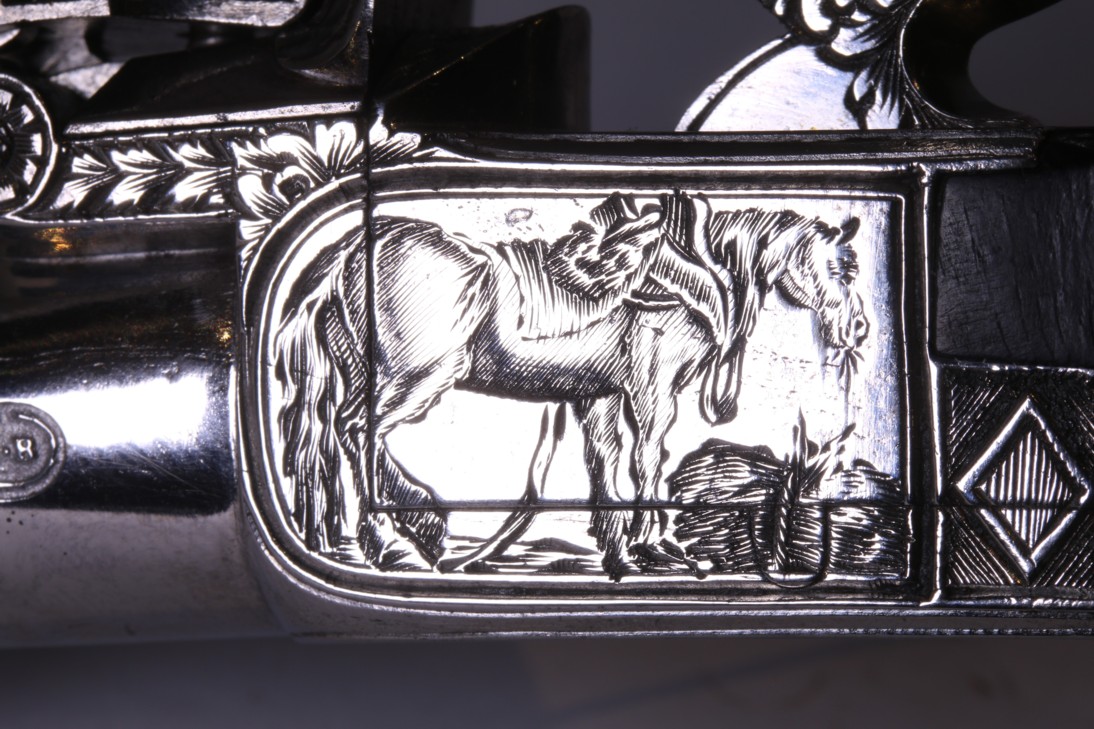
Boutet – author’s collection
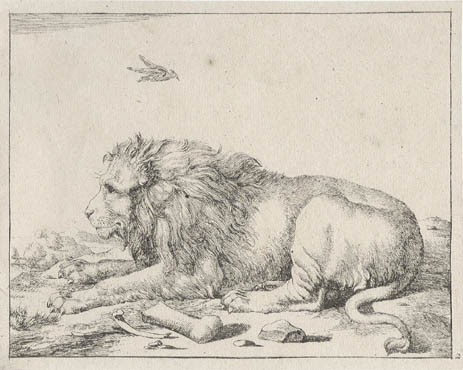
Etching by Marcus del Bey
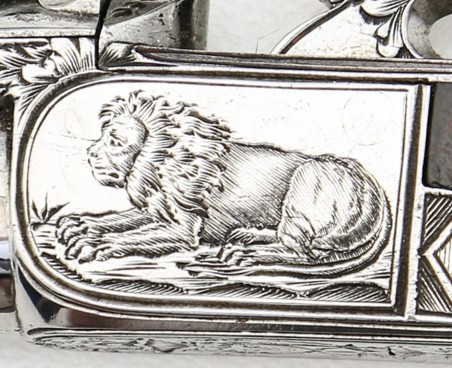
Boutet – author’s collection
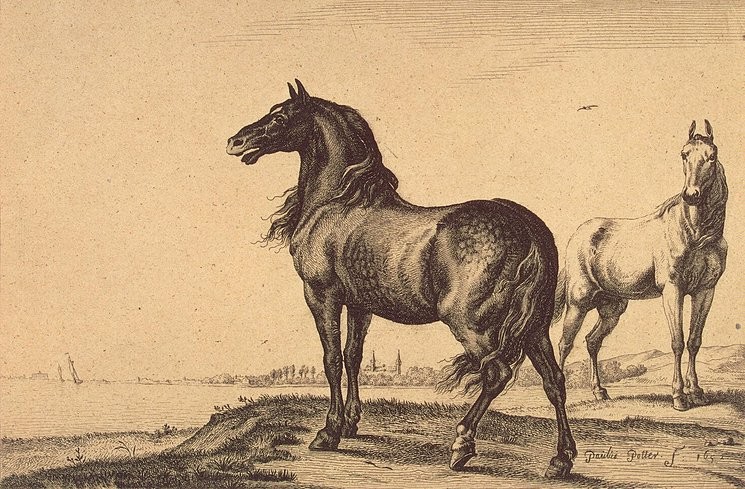
Neighing horse – Paulus Potter

Boutet – author’s collection

LePage – Metropolitan Museum of Art
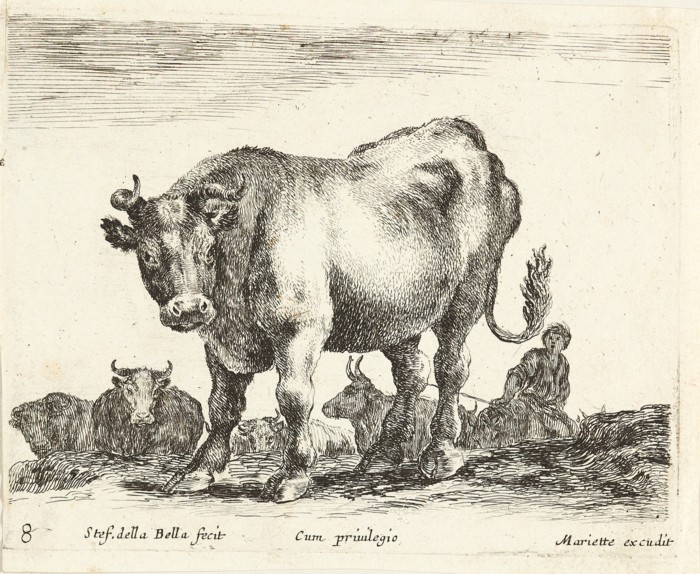
Etching Stefano Della Bella
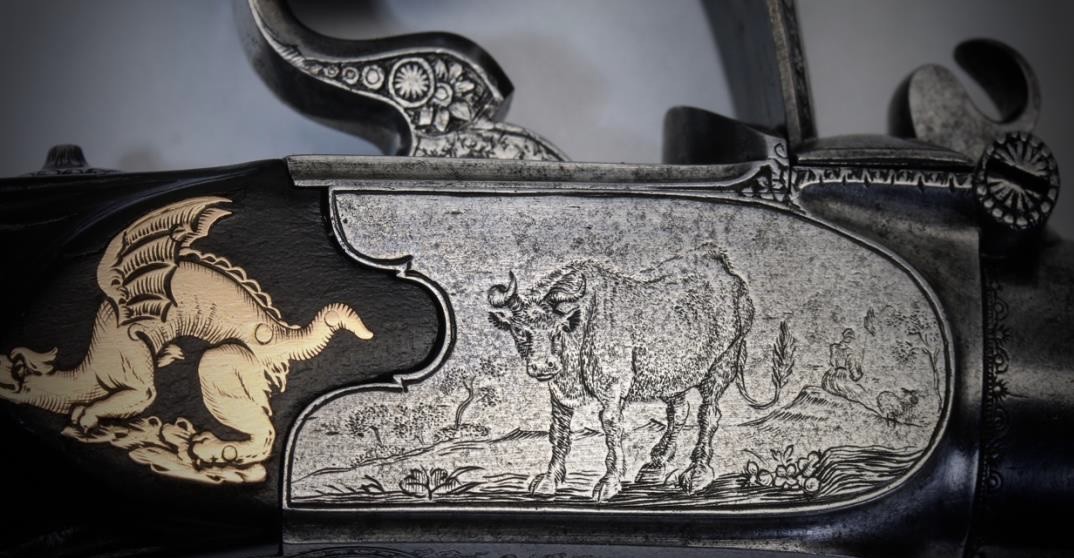
Boutet – author’s collection

Boutet – author’s collection
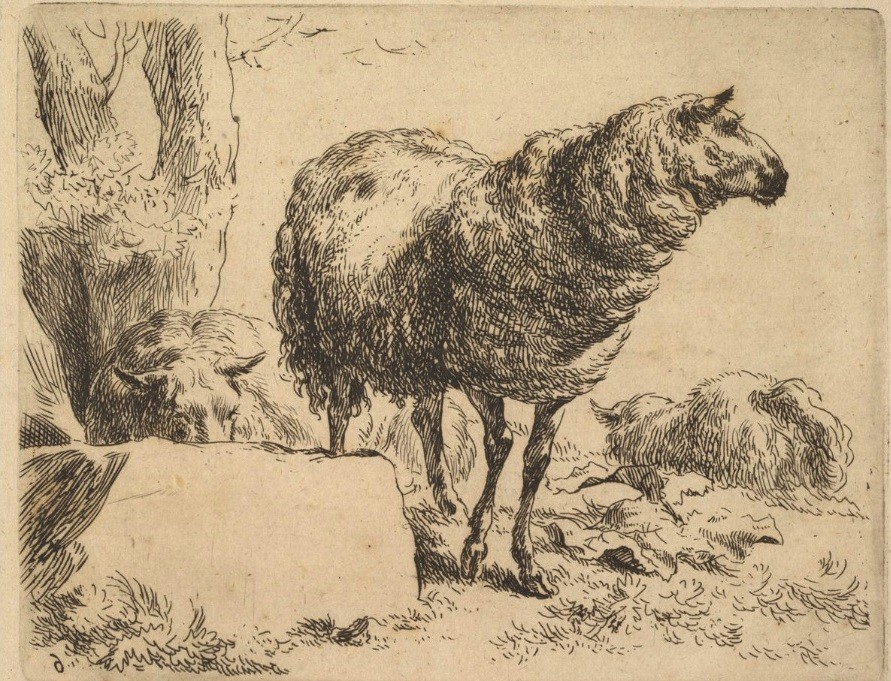
Etching – Paulus Potter

LePage –
author’s collection

Boutet – part of four-gun garniture – private collection
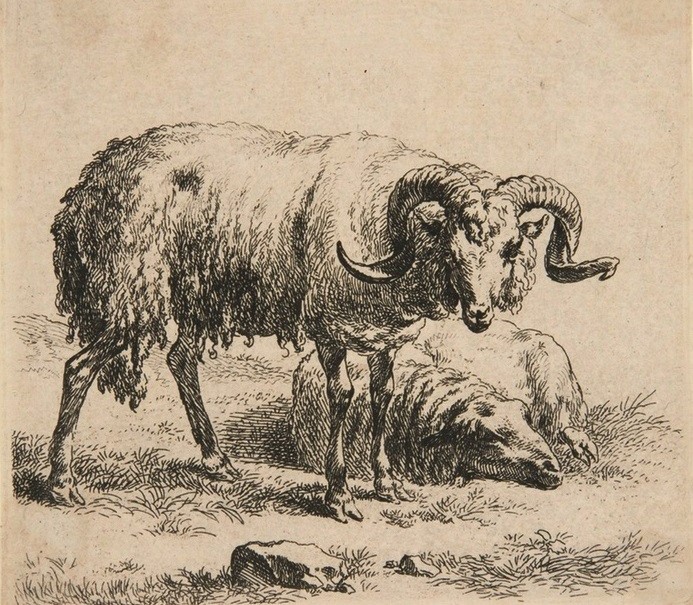
Etching – Paulus Potter
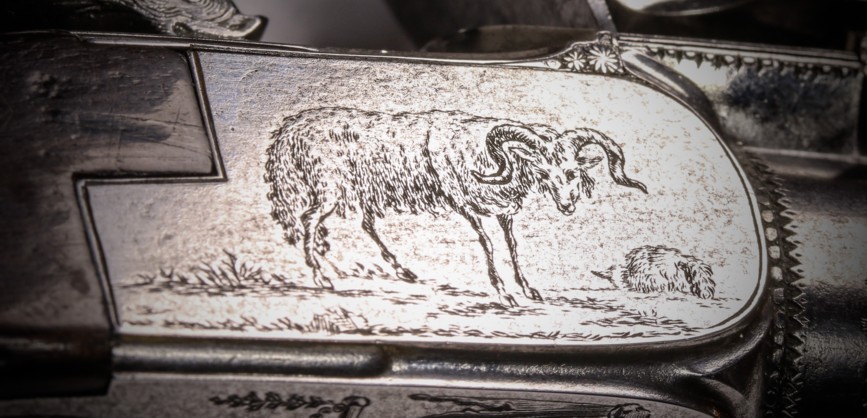
LePage – author’s collection
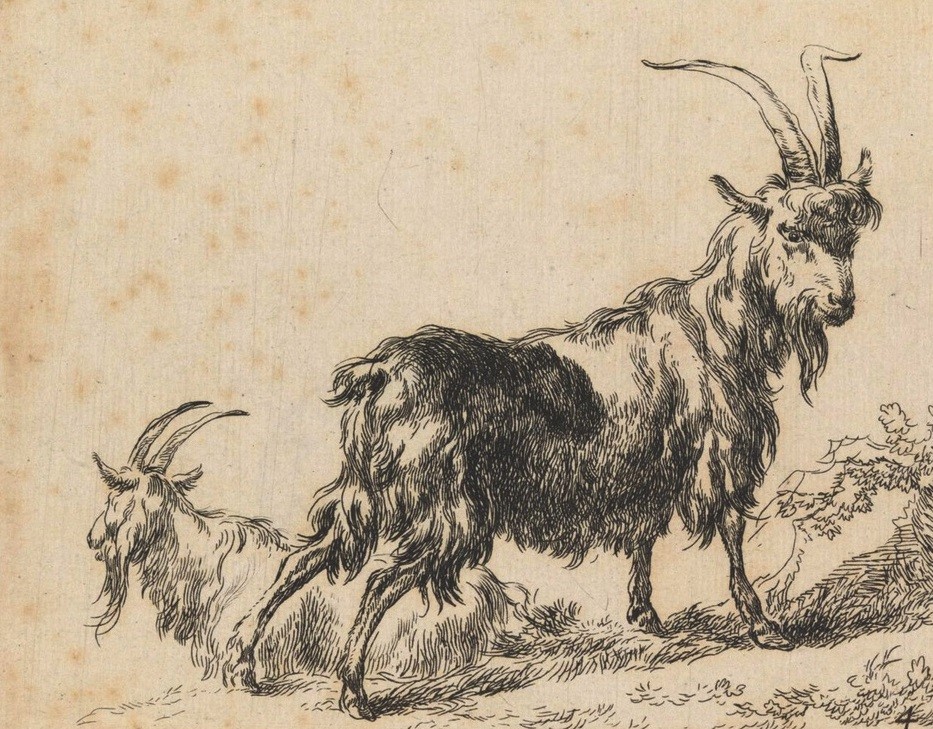
Etching - Nicolaes Berchem
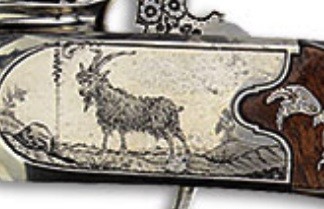
Boutet – part of four-gun garniture – private collection

LePage – author’s collection
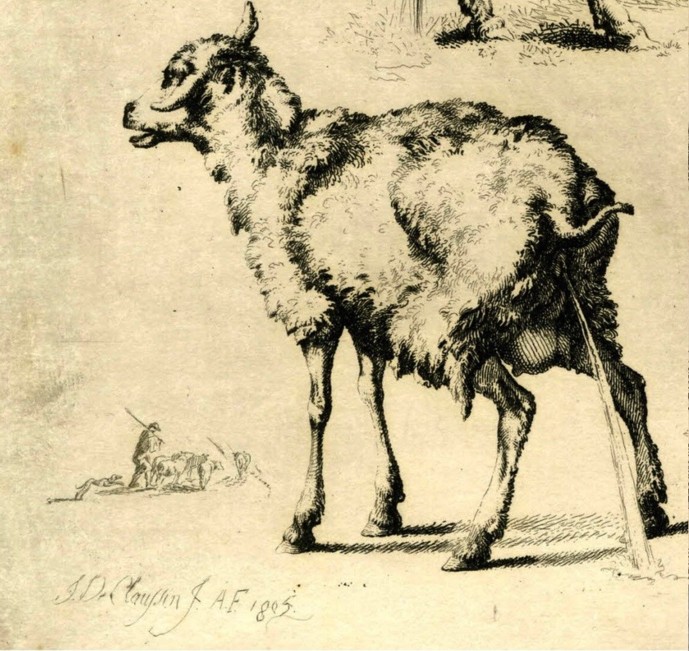
Etching by Ignace Joseph Chevalier de Claussin after Paulus Potter
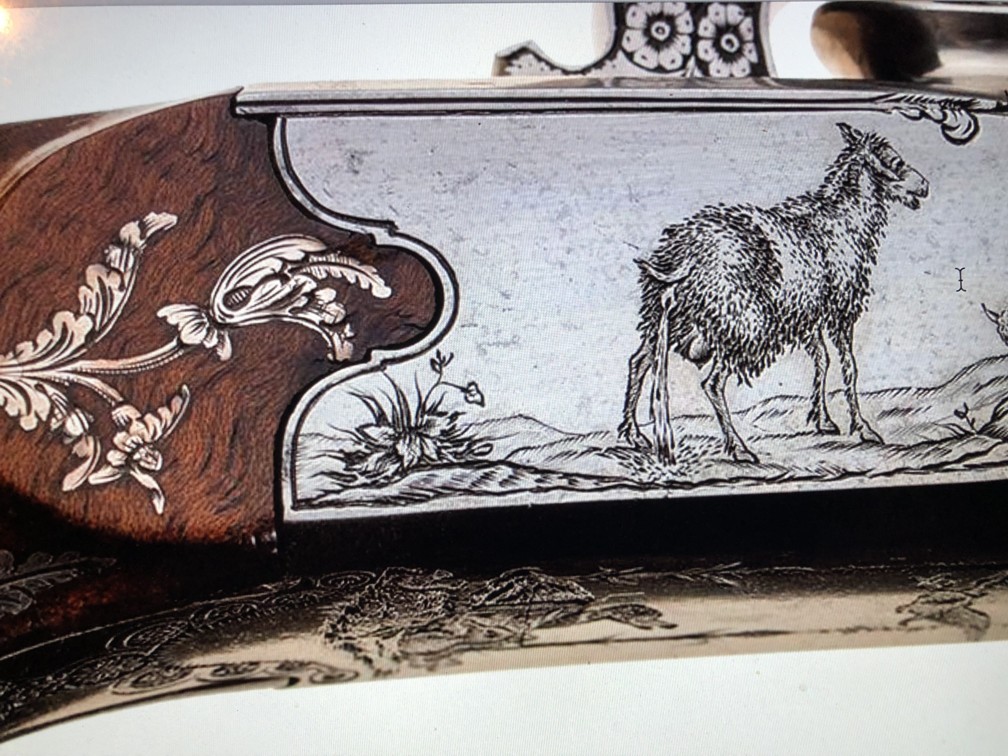
Boutet – part of four-gun garniture – private collection
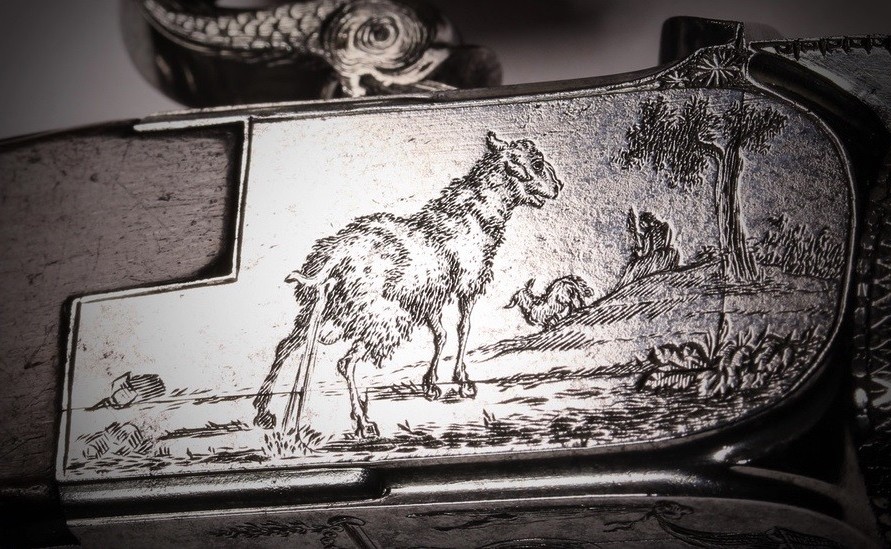
LePage – author’s collection